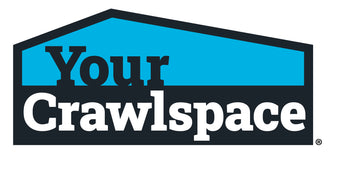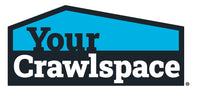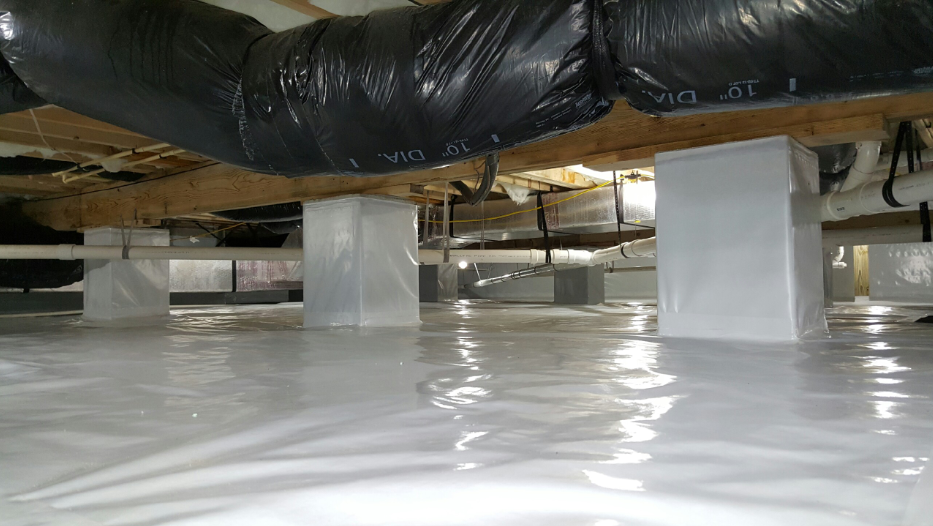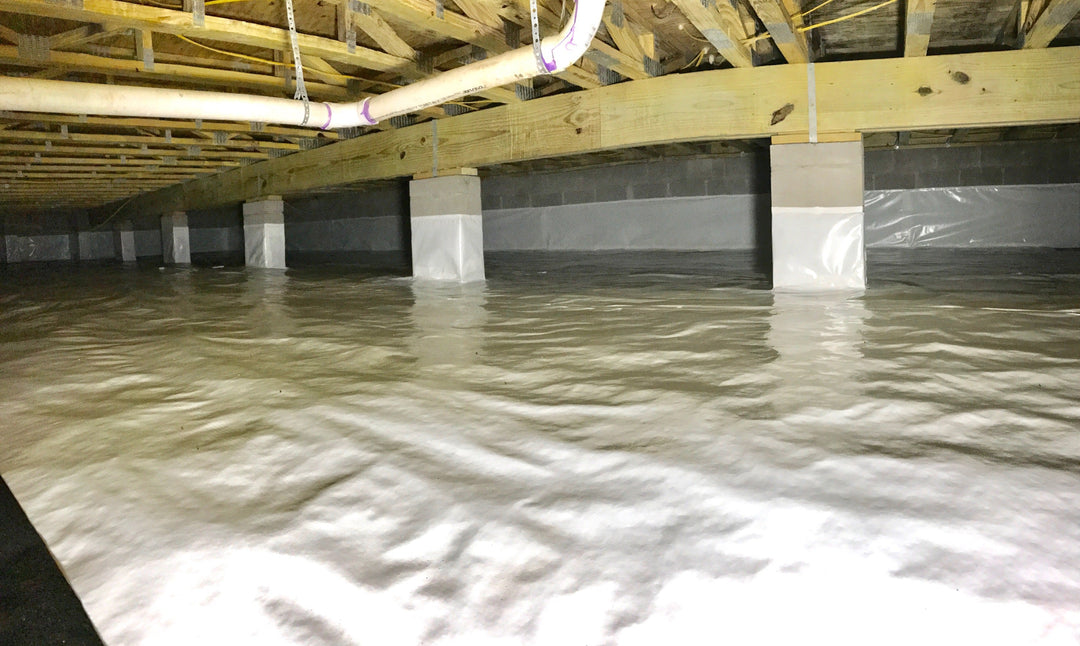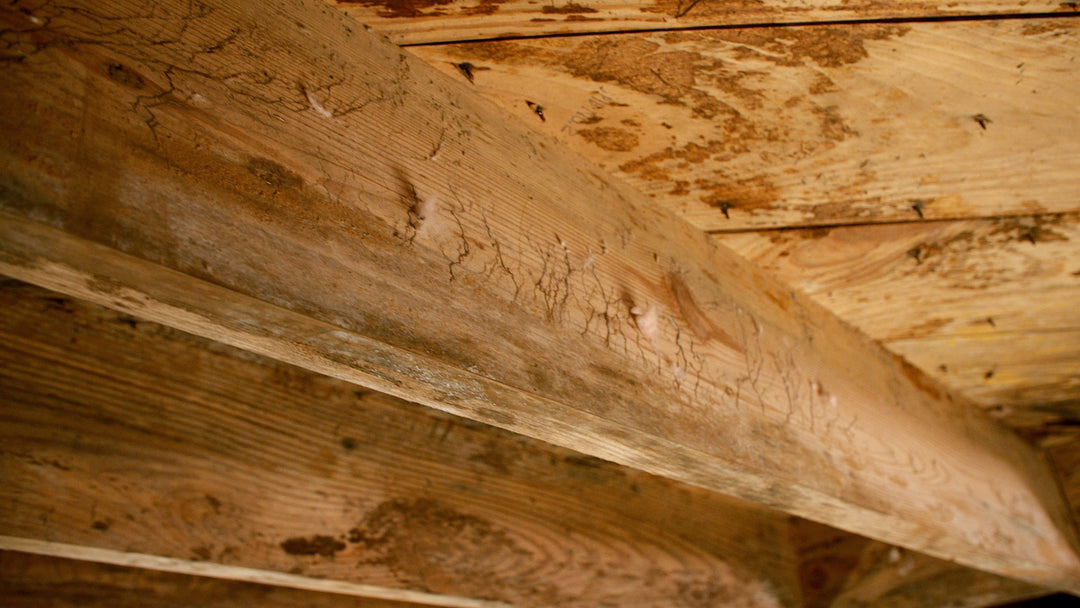How to Choose the Best Placement for a Crawlspace Dehumidifier
Tips for Crawl Space Encapsulation and Effective Dehumidifier Performance
When considering crawl space encapsulation, the placement of the dehumidifier matters. It is as important as choosing the right dehumidifier. A well-installed dehumidifier in the correct location can run efficiently, protect your home, and improve indoor air quality. Poor placement, however, can lead to high energy bills, constant dampness, and even damage.
Real-World Example: When Placement Goes Wrong
A homeowner recently reached out to us. They had a dehumidifier that was too noisy. It ran all the time and still left a musty smell in the house. After inspecting, these issues stood out:
- The unit was mounted directly under a master bedroom, so at night every vibration and sound was amplified.
- The intake was located less than 10 feet from the outside foundation wall, meaning constantly humid air was being sucked in.
- The base under the unit was uneven, and condensate was leaking back under the unit instead of being drained away.
In other words, even though the dehumidifier was a good model, its placement stopped it from working well.
With just a few adjustments—relocating the intake, raising and leveling the base, redirecting condensate drainage, and ensuring the electrical setup met safety codes—the crawlspace dried out, the musty odor disappeared, and the unit ran more quietly and efficiently.
This example highlights a common truth: the best dehumidifier in the world won’t protect your crawlspace if it’s placed incorrectly.
Key Factors to Consider for Dehumidifier Placement in a Crawlspace
Here are the best practices to follow when placing a dehumidifier in a crawlspace, especially when part of a crawl space encapsulation project:
| Factor | Why it Matters | Best Practice |
|---|---|---|
| Distance from Exterior Walls | Prevents outdoor air (humid, leaking) from continuously entering the unit and overworking it. | Keep intake at least 10 feet from exterior foundation walls. |
| Noise Impact | Noise-sensitive areas (bedrooms, living spaces above) will react poorly to vibration or sound. | Do not place under bedrooms. Use sound dampening base if necessary. |
| Stable, Level Base | Uneven placement causes condensate leaks, inefficient drainage, and shortened unit lifespan. | Raise 4–6 inches off ground; use solid, level platform. |
| Drainage Setup | Condensate that leaks back into the crawlspace defeats the purpose of the system. | Use condensate pump or gravity drain; ensure water leaves the crawlspace. |
| Airflow Clearance | Blocked or restricted airflow reduces efficiency and causes unit to overwork. | Keep intake and exhaust unobstructed; leave space around unit. |
| Proper Wiring & Safety | Humid, damp environments demand correct wiring to prevent shocks or fire. | Use a dedicated GFCI 20-amp circuit. Include water-resistant outlet covers. Add a light nearby for servicing. |
Common Placement Mistakes & How to Avoid Them
- Too close to outside walls: The dehumidifier pulls in moist air constantly, causing it to run nonstop.
- Under noisy living spaces: Nighttime noise is amplified, leading to complaints and poor sleep.
- Poor base / uneven flooring: Leads to condensate pooling and even water feeding back under the unit.
- Improper drain setup: If the condensate can’t exit properly, it’s wasted effort and invites new moisture problems.
- Restricted airflow: Blockages like beams, walls, or storage boxes force the unit to work harder.
Each of these mistakes is avoidable if you plan ahead and remember that airflow, drainage, and noise control are just as important as capacity.
Best Practices for Peak Efficiency
- Choose a central location whenever possible, so airflow circulates evenly across the crawlspace.
- Use a raised platform that is level, sturdy, and moisture-resistant.
- Install a proper drainage line—gravity or pump—that directs condensate outside the crawlspace entirely.
- Dedicate a safe electrical circuit to the unit and follow all code requirements.
- Allow at least 12 inches of clearance in front of intake and exhaust for unrestricted airflow.
- Plan for maintenance access—technicians should be able to reach the unit for filter changes or repairs.
These practices not only keep the dehumidifier running smoothly but also protect your crawl space encapsulation investment.
Placement Checklist
Before installing your dehumidifier, run through this checklist to ensure you've chosen the right spot:
- Intake ≥ 10 feet from exterior walls
- Not placed under bedrooms or directly above quiet living spaces
- Level, raised base 4-6 inches off crawlspace floor
- Proper drainage route in place (pump or gravity)
- Unobstructed airflow around dehumidifier (access on all sides)
- Installed on a dedicated GFCI circuit with outlet protection
- Sufficient clearance for future service or repairs
FAQs About Dehumidifier Placement & Crawl Space Encapsulation
Can placing the dehumidifier close to outside walls reduce its efficiency?
Yes. Air near exterior walls is often more humid and fluctuates in temperature. Placing the intake there forces the unit to cycle constantly and raises energy costs.
Is it okay to place the dehumidifier under a bedroom if I use vibration pads?
It helps, but sound and vibration travel through wood framing. Whenever possible, place the unit away from bedrooms or living areas to avoid long-term noise complaints.
Does raising the unit off the ground really help?
Absolutely. Elevating the unit not only improves drainage but also prevents rust, corrosion, or electrical issues caused by standing water on the crawlspace floor.
How far away should the unit be from structural obstructions?
At least 12 inches in front and back for intake/exhaust airflow. Sides can be closer but should never be pressed directly against beams or walls.
Should I DIY placement or hire a professional?
DIY placement is possible, but professional installers know how to balance noise, drainage, and airflow while ensuring the wiring meets local codes. A small mistake can shorten the unit’s life or even void the warranty.
Why Good Placement Matters for Your Crawl Space Encapsulation
When you’re making the investment in crawl space encapsulation, you’re sealing the enclosure to block ground vapor, insulation decay, and moisture intrusion. But even the best vapor barrier, wall liner, or insulation won’t reach full effectiveness if humidity control via a dehumidifier is compromised by poor placement.
Correct placement means:
- Longer lifespan for your equipment
- Better protection of insulation, structural wood, and ductwork
- Lower energy bills because you avoid overworking the unit
- Reduced risk of mold or mildew even after encapsulation
- Cleaner, healthier air rising into your living space
Simply put, where you put your dehumidifier is just as important as choosing the right one.
Take Action: Get Optimal Performance
Don Richards of Don Richards Services LLC often says that right placement is “the secret sauce” to a properly performing dehumidifier under any crawl space encapsulation project. If you’re installing a unit, don’t just focus on the model—focus on where you put it.
If you want help picking the best location, or want us to audit your current setup, [reach out to Your Crawlspace]. Proper placement ensures your encapsulation investment truly delivers.


